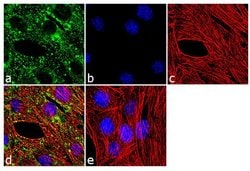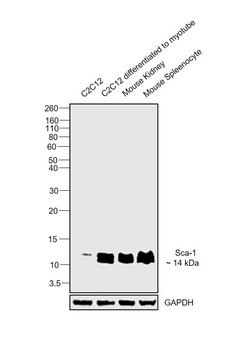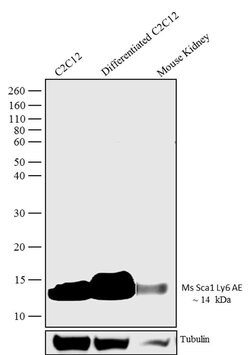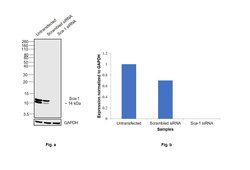Learn More
Invitrogen™ Sca-1 Recombinant Rabbit Monoclonal Antibody (7 H4L3)
Rabbit Recombinant Monoclonal Antibody
Supplier: Invitrogen™ 701919
Description
This antibody is predicted to react with Mouse, Rat and Monkey. Recombinant rabbit monoclonal antibodies are produced using in vitro expression systems. The expression systems are developed by cloning in the specific antibody DNA sequences from immunoreactive rabbits. Then, individual clones are screened to select the best candidates for production. The advantages of using recombinant rabbit monoclonal antibodies include: better specificity and sensitivity, lot-to-lot consistency, animal origin-free formulations, and broader immunoreactivity to diverse targets due to larger rabbit immune repertoire.
Stem Cell Antigen-1 (Sca-1) is a member of the lymphocyte antigen 6 (Ly-6) family. It is expressed on multipotent hematopoietic stem cells (HSC) and is used as a marker of HSC in mice. Sca-1 is used in combination with lineage depletion antibodies to identify murine HSC. Sca-1 can be found in fetal liver, adult bone marrow, and adult peripheral blood and spleen. Sca-1 may be involved in the regulation of B and T cell activation.
Specifications
| Sca-1 | |
| Recombinant Monoclonal | |
| 0.5 mg/mL | |
| PBS with 0.09% sodium azide; pH 7.2 | |
| P05533, Q64253 | |
| Ly6a, Ly6e | |
| Peptides corresponding to Mouse Ly6a (aa 83-97, 57-70). | |
| 100 μg | |
| Primary | |
| Mouse | |
| Antibody | |
| IgG |
| Western Blot, Immunocytochemistry | |
| 7 H4L3 | |
| Unconjugated | |
| Ly6a | |
| 9804; locus A/E; Locus AE; Ly6; Ly67; Ly6a; Ly-6A.2; Ly-6A.2/Ly-6E.1; Ly6A/E; Ly-6A/E; ly6a-e; Ly6e; Ly-6E; Ly-6E.1; lymphocyte antigen 6 complex; lymphocyte antigen 6 complex, locus A; lymphocyte antigen 6 complex, locus E; lymphocyte antigen 6A-2/6E-1; Lymphocyte antigen 6E; RIG-E; Sca1; Sca-1; Sca-2; stem cell antigen 1; Stem cell antigen 2; TAP; T-cell-activating protein; thymic shared antigen 1; Tsa1; TSA-1 | |
| Rabbit | |
| Protein A | |
| RUO | |
| 110454, 17069 | |
| Store at 4°C short term. For long term storage, store at -20°C, avoiding freeze/thaw cycles. | |
| Liquid |
Your input is important to us. Please complete this form to provide feedback related to the content on this product.



